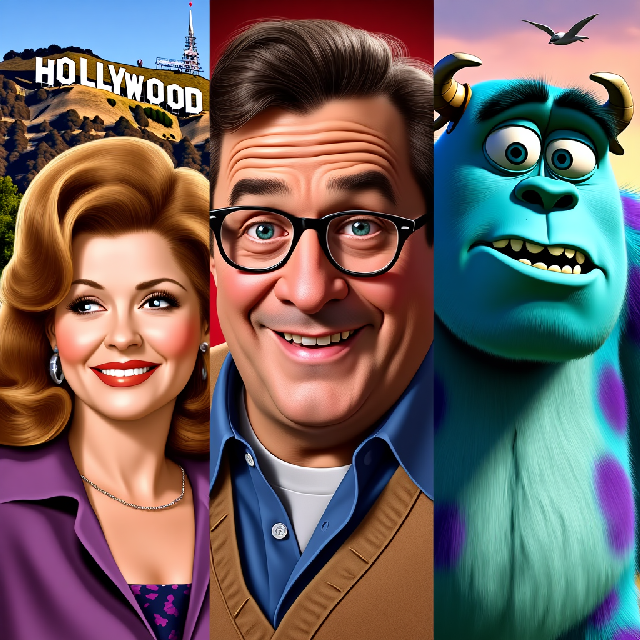John Goodman: A Hollywood Icon of Versatility and Resilience
Introduction
John Goodman is a beloved actor known for his versatility, resilience, and iconic roles that have left an indelible mark on Hollywood. From his early life in Missouri to his rise as a Hollywood icon, Goodman’s journey is a testament to talent, perseverance, and enduring impact.
Early Life and Education
Born on June 20, 1952, in Affton, Missouri, John Goodman grew up in a working-class family. His father passed away when he was just two, leaving his mother to raise him and his siblings. This challenging upbringing instilled in him a resilience that would later define his career.
Goodman’s early interests leaned towards sports, earning him a football scholarship to Southwest Missouri State University. However, an injury led him to drama classes, where he discovered his true calling. His education shaped his acting skills and confidence, setting the stage for his future success.
Career Evolution
Early Struggles in Theater
After graduating in 1975, Goodman moved to New York City, working odd jobs while auditioning. Small roles in off-Broadway productions and dinner theaters eventually led to his first significant role in the Broadway play Loose Ends (1979).
Breakthrough on Television
Goodman’s breakthrough came with Roseanne (1988–1997), where he played Dan Conner, the lovable yet flawed patriarch. This role earned him a Golden Globe Award and seven Emmy nominations, catapulting him to national fame.
Transition to Film
In the early 1980s, Goodman began transitioning to film with minor roles in movies like Eddie Macon’s Run (1983). His collaborations with the Coen Brothers showcased his ability to portray eccentric characters, notably in Raising Arizona (1987), Barton Fink (1991), and The Big Lebowski (1998).
Leading Roles and Dramatic Range
Goodman took on leading roles in films like King Ralph (1991) and The Flintstones (1994). His dramatic performances in Argo (2012) and Inside Llewyn Davis (2013) demonstrated his range.
Voice Acting Success
His iconic voice brought characters to life in animated films, most notably Sulley in Monsters, Inc. (2001), solidifying his place in family entertainment.
Iconic Roles and Versatility
Goodman’s versatility shines through his ability to excel in both comedic and dramatic roles. His physical presence and expressive face amplify humor, as seen in The Big Lebowski. Conversely, his deep voice and nuanced performances in films like Argo highlight his dramatic prowess.
Iconic Role in The Big Lebowski
As Walter Sobchak, Goodman delivered a masterclass in comedic acting. His booming voice and exaggerated gestures made the character unforgettable, earning him a cult following.
Voice Acting Expertise
In Monsters, Inc., Goodman’s portrayal of Sulley showcased his ability to convey emotion without a physical presence, making Sulley a beloved character.
Personal Resilience
Goodman has faced personal struggles with depression and alcoholism. His resilience is evident in overcoming these challenges while continuing to act in theater, television, and film, proving his enduring talent and dedication.
Legacy and Impact
John Goodman’s influence extends beyond his performances. He has inspired a new generation of actors with his commitment to his craft and seamless genre transitions. His contributions have enriched American cinema, leaving behind a legacy celebrated for years to come.
Conclusion
John Goodman’s journey from small-town Missouri to Hollywood icon is a story of talent, perseverance, and genuine stardom. His versatility, resilience, and enduring impact ensure his place in entertainment history.
Suggested Visual Elements:
- Image of John Goodman as Dan Conner in Roseanne
- Behind-the-scenes photos from The Big Lebowski and Coen Brothers films
- Poster from Monsters, Inc. featuring Sulley
This revised article offers a more engaging, structured, and insightful look into John Goodman’s remarkable journey.

I’m interested in how John Goodman’s struggles with depression and alcoholism, which are mentioned in the article, affected his career. The piece doesn’t go into much detail about this connection.
tags is also necessary.
The article highlights John Goodman’s resilience in overcoming depression and alcoholism but doesn’t explore how these struggles impacted his career choices or setbacks. It would be insightful to see how he balanced personal challenges with acting. Additionally, comparing his experiences to others in Hollywood dealing with similar issues could provide broader context on mental health in the industry. The piece also omits details about support systems or resources Goodman used during tough times, which would add depth by showing how assistance contributed to his success.
The article discusses how John Goodman handled depression and alcoholism while still having a successful career.
The article discusses John Goodman’s struggles with depression and alcoholism but doesn’t explore how these affected his career choices or performances, leaving readers curious about their impact on his success.
The article talks about John Goodman’s struggles with depression and alcoholism but doesn’t connect these challenges to his career choices or how he kept succeeding professionally despite personal issues. It would have been interesting to see how these aspects of his life influenced his acting path.